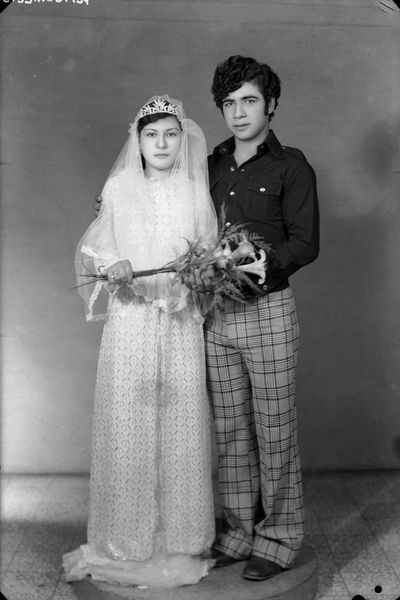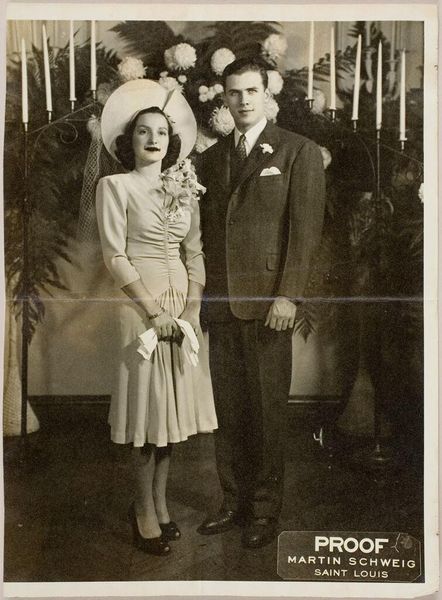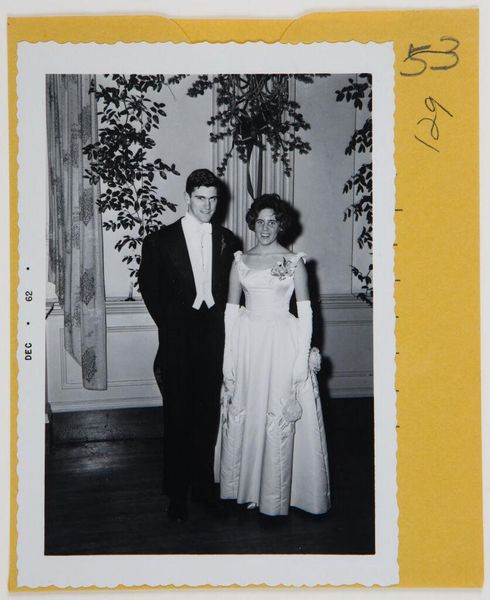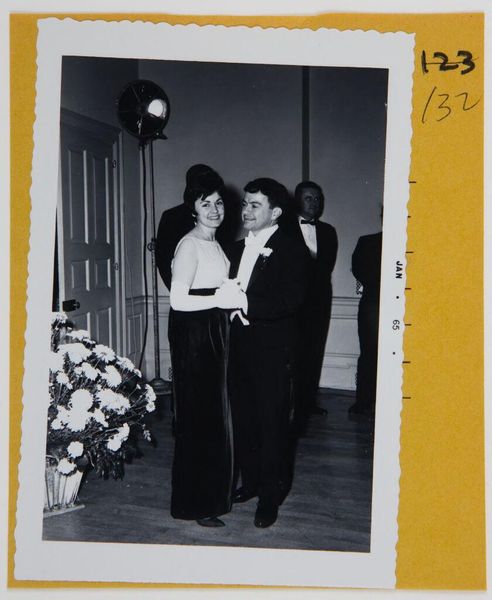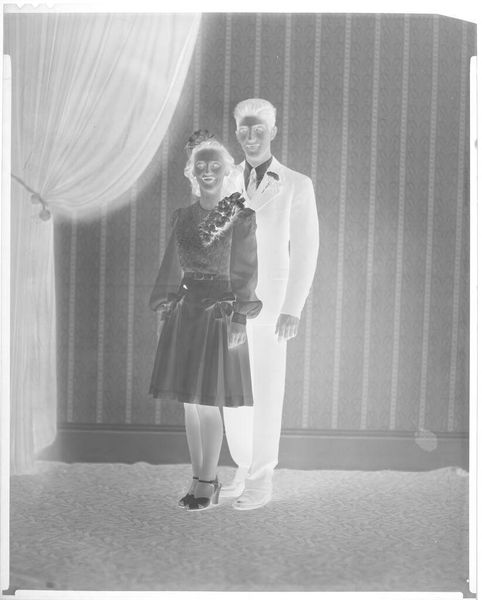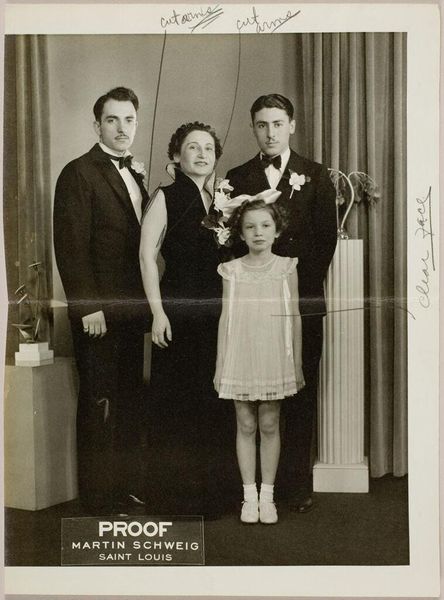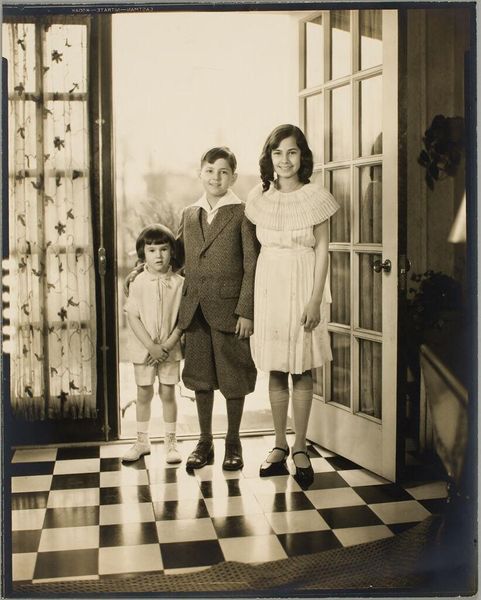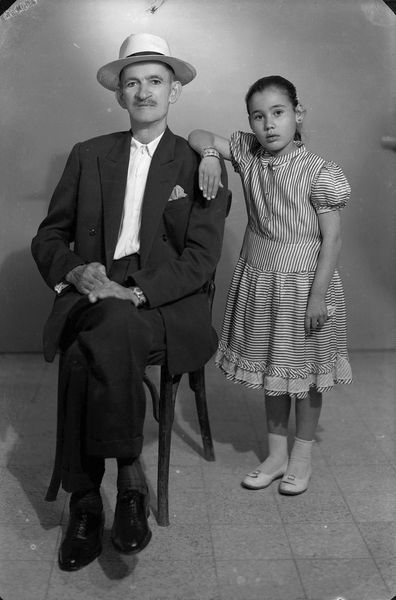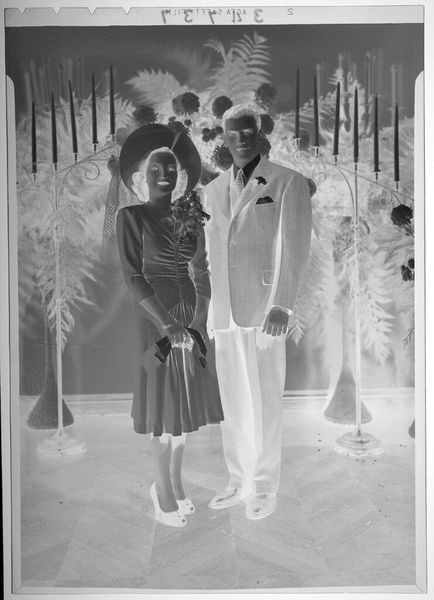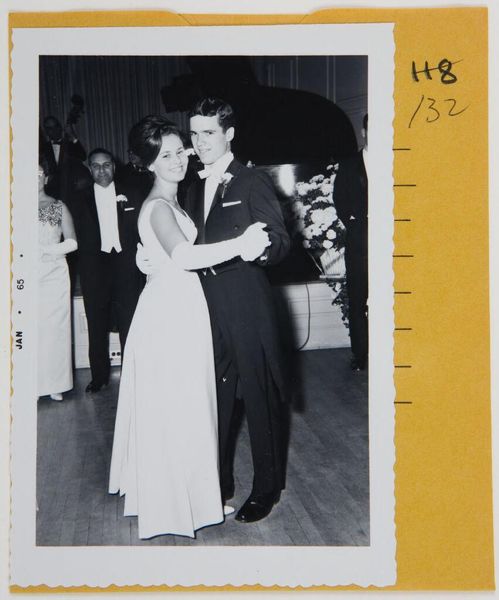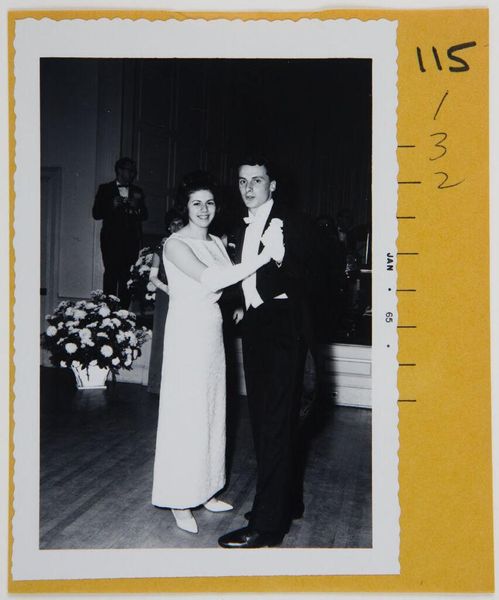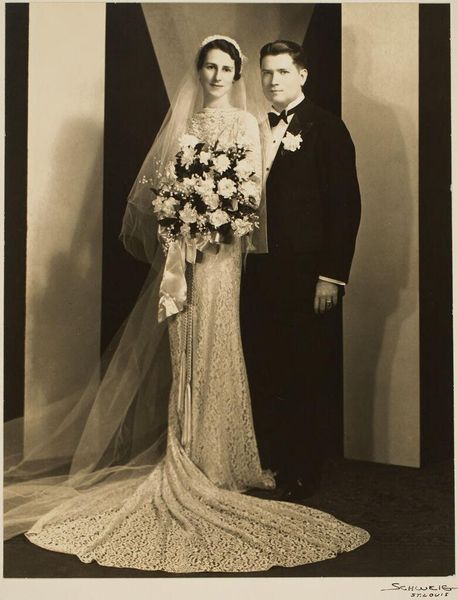
Son of Lebanese residents in an African country, and a relative. Studio Shehrazade, Saida, Lebanon, 1970s. Hashem el Madani 2007
0:00
0:00
Dimensions: image: 390 x 265 mm
Copyright: © Akram Zaatari, courtesy Hashem el Madani and Arab Image Foundation, Beirut | CC-BY-NC-ND 4.0 DEED, Photo: Tate
Editor: This photograph, "Son of Lebanese residents in an African country, and a relative," was taken in the 1970s by Hashem el Madani at Studio Shehrazade in Saida, Lebanon. The subjects' clothing and expressions are so intriguing! What do you see in this piece? Curator: It speaks volumes about identity and displacement. Consider the title – it immediately situates these individuals within layered contexts: Lebanese, African, familial. What does it mean to be "of" a place while residing in another? The studio setting, a constructed space, further complicates notions of authenticity. Editor: That makes me think about how identity is performed, especially in a photograph. Curator: Precisely! Madani's work, preserved by Akram Zaatari, becomes a crucial document of transnational lives. How do you think this image challenges or reinforces common perceptions of identity and belonging? Editor: I see now how this portrait captures something much larger about identity and belonging. Thanks! Curator: Indeed. It's a potent reminder of the complexities inherent in our globalized world.
Comments
tate 6 months ago
⋮
http://www.tate.org.uk/art/artworks/zaatari-son-of-lebanese-residents-in-an-african-country-and-a-relative-studio-shehrazade-p79488
Join the conversation
Join millions of artists and users on Artera today and experience the ultimate creative platform.
tate 6 months ago
⋮
This work is one of a series of black and white silver gelatin photographs of varying sizes that are collectively titled Objects of study/The archive of studio Shehrazade/Hashem el Madani/Studio Practices. All of the photographs were taken by the Lebanese commercial photographer Hashem el Madani between 1948 and 1982 and compiled into the present group, 117 of which are in Tate’s collection, by the Lebanese artist Akram Zaatari. All of the photographs include people, either alone, in pairs or in small groups, and most were taken in Madani’s studio, although some were shot outside and in his subjects’ homes. The series features men and women and covers a wide age range from babies to elderly people. Almost all of the sitters assume poses deliberately for the camera, sometimes accompanied by props or costumes, and most gaze directly towards the lens. Many of the pictures show subjects interacting in various ways, including embracing, kissing and acting out scenes, such as a mock wrestling match. The photographs are mostly tightly cropped, with the sitter or sitters filling most of the frame, although in some cases the figures are positioned further away from the camera, for instance when shown sitting at a table or standing behind a chair. The photographs tend to have sparse backgrounds, often dominated by a blank posterior wall. They are mounted on white paper, displayed in plain white frames and signed on the back by Madani. Many of them have been organised into categories by Zaatari – such as a group featuring men dressed as Syrian resistance fighters and a collection depicting newly married couples – while the rest are presented individually. Zaatari has stated that although he prefers these groups to be displayed together, this is not a requirement (Akram Zaatari, email to Rachel Taylor, 24 April 2008, Tate Acquisition file).
